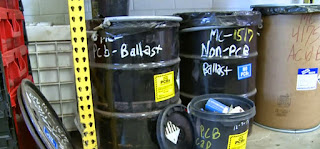ROAD WORKERS ARE AT HIGH RISK OF DEATH OR INJURY: J.R. Rogers, a worker with the Tennessee Department of Transportation, has died after being struck on the side of Interstate 40 while helping a family. He was killed by a Hispanic driver, Dennis Castellanos Moreno. He was charged with operating a vehicle without a license and driving without insurance.
NASHVILLE, Tenn. - A worker with the Tennessee Department of Transportation has died after being struck on the side of Interstate 40 on Christmas Eve.
J.R. Rogers was hit around 7 p.m. Saturday after stopping to help a family in need. The incident happened in the westbound lanes of Interstate 40 near the Old Hickory Boulevard exit.
Rogers also worked as a football coach at Cheatham County High School. Late Wednesday night, the school tweeted, "We are grieving the loss of our coach and friend, JR Rogers. Our thoughts and prayers are with his family and friends."
The roads were wet the night of the crash. Officials said driver Dennis Castellanos Moreno failed to see other vehicles slowing down where the tire was being changed.
By the time he saw Rogers, he was unable to stop quick enough and lost control.
Moreno was charged with operating a vehicle without a license and driving without insurance. He was later released on bond.
Friends and athletes hoped they could help Rogers’ family with any expenses insurance won’t cover. For details on the fund, visit GoFundMe.com.
Black and Hispanic drivers commit dis-proportionally high traffic offenses, as per a Federal Traffic Study. The blacks also commit more than 50% of homicides, but they only represent 13.3% of the U.S. population. These two races are responsible for the majority of the federal and state expenditures required to feed them, house them, treat them, etc.
















